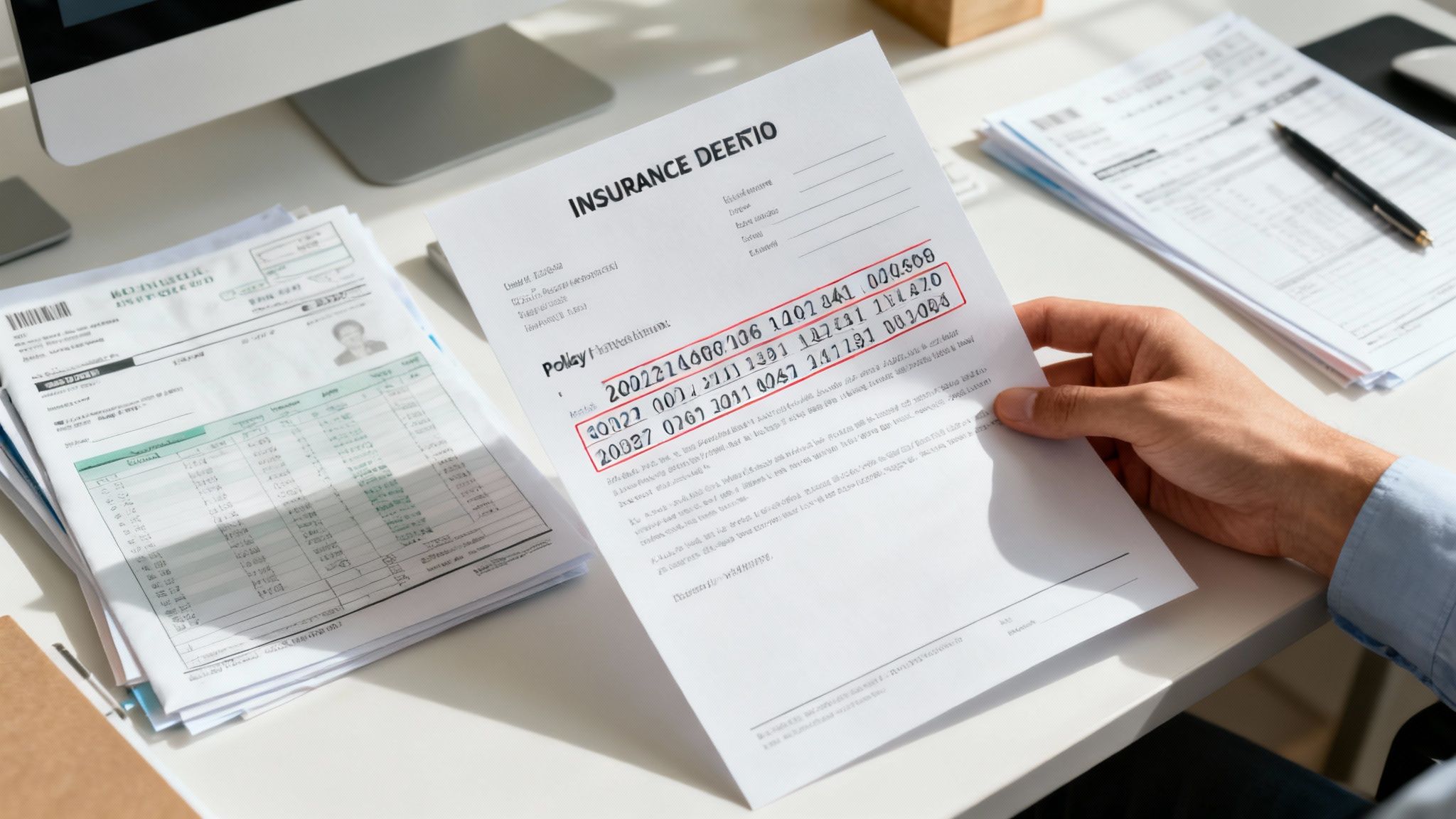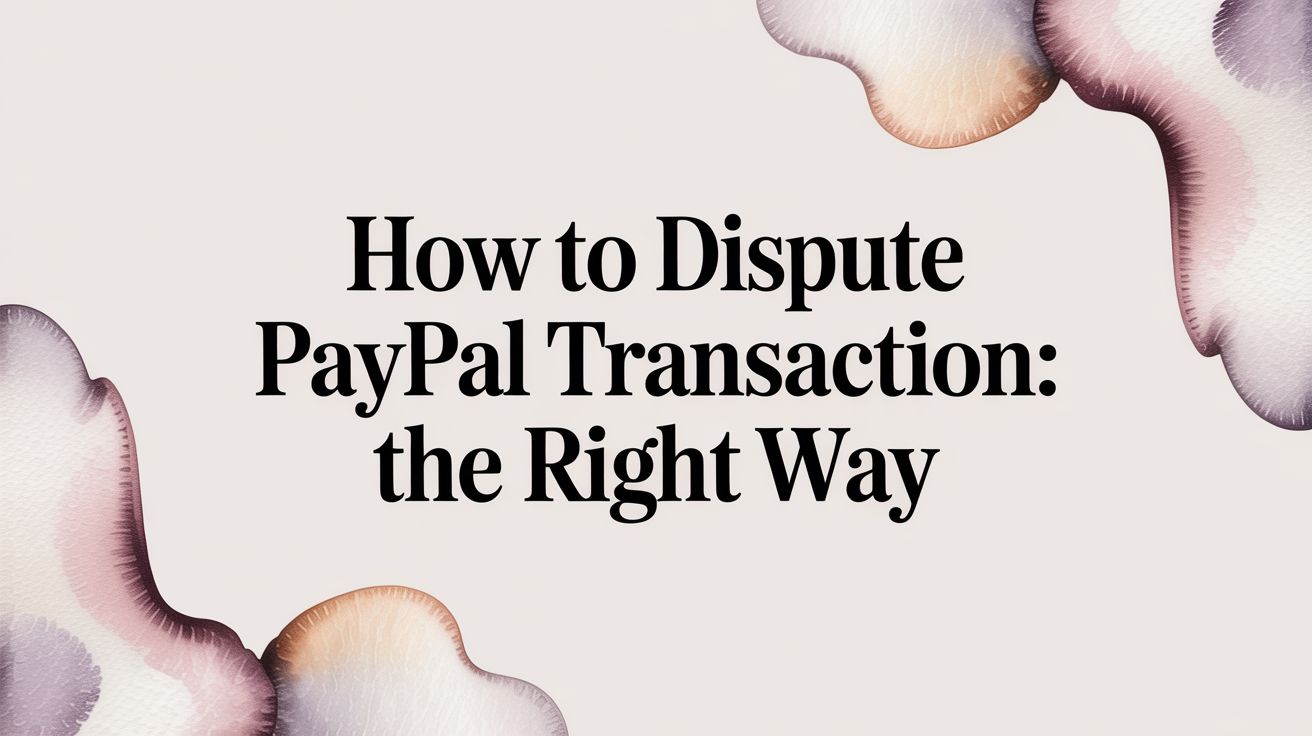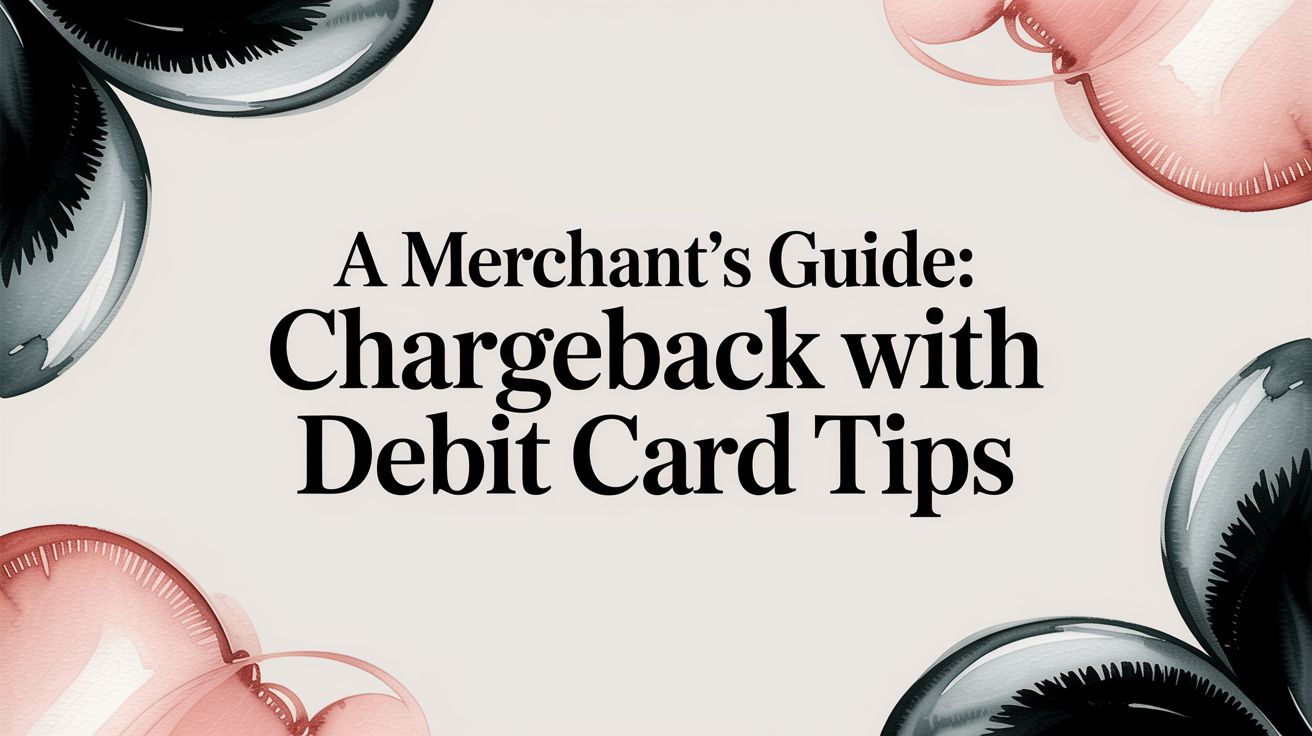
Ever get news that just feels wrong? A denied insurance claim, an unfair performance review, or a pesky error on your credit report? It's a frustrating moment, but you don't have to just accept it. A well-written rebuttal letter is your best tool for turning a 'no' into a 'yes'.
It’s about more than just disagreeing; it’s about presenting your case clearly, calmly, and with solid evidence. Think of it as a professional way to say, "Hold on, let's look at this again." This guide is packed with templates and strategies to help you do just that. We're breaking down six common scenarios where a strong response is a must.
For each situation, you'll find a complete rebuttal letter sample, a detailed breakdown of why it works, and tips you can use immediately. Forget the guesswork and learn how to write a letter that gets the results you deserve. Let's get started.
1. Academic Journal Manuscript Rebuttal Letter
Getting into academic publishing means facing peer review, a critical but often challenging process. When you submit a research manuscript to a journal, experts in your field will go through it with a fine-tooth comb and give feedback. A rebuttal letter is your formal, point-by-point response to their comments. This isn't just a simple reply; it's a careful document that can make the difference between rejection and acceptance.
This type of rebuttal letter sample is crucial because it shows your professionalism and commitment to high standards. It proves to the journal editor that you have carefully considered the feedback and are responsive to constructive criticism, which reinforces the quality and integrity of your research.

Why This Rebuttal Works
A good academic rebuttal letter is methodical and respectful. Its power comes from its structure: directly addressing each reviewer's concern, explaining the changes you made in the manuscript, or providing a well-reasoned argument for why a suggestion wasn't a good fit.
For example, if a reviewer questions your statistical methods, a strong rebuttal would not only explain your reasoning but also point to the exact location of revisions. You might see a response like, "We thank the reviewer for this insightful comment. In response, we have conducted an additional t-test and updated Figure 3 and the accompanying text on page 8, lines 150-162, to reflect these new findings." This precision leaves no room for confusion.
Actionable Tips for Your Academic Rebuttal
To write a compelling response, follow these proven strategies:
- Start with Gratitude: Always begin by thanking the editor and the reviewers for their time and valuable feedback. This sets a collaborative, not confrontational, tone.
- Create a Point-by-Point Structure: Copy each reviewer's comment in full. Immediately below it, write your response. Use formatting like bold text or a different color for your replies to make them easy to distinguish.
- Be Incredibly Specific: Don't just say you "clarified the methodology." Instead, state, "We have revised the 'Methods' section on page 4, lines 95-101, to explicitly detail the calibration process for the spectrometer."
- Disagree Gracefully: If you disagree with a comment, do so respectfully and with evidence. Back up your position with citations from established literature or data from your own study.
By systematically and respectfully addressing feedback, you build a strong case for your manuscript's publication. For a deeper look at different rebuttal scenarios, you can explore another great example of a rebuttal letter to help refine your approach.
2. Insurance Claim Denial Rebuttal Letter
When an insurance company denies a claim, it can feel like a final, frustrating dead end. However, a rebuttal letter serves as your formal appeal, giving you the power to challenge the decision. This document is a structured argument designed to persuade the insurer to reconsider and approve your claim, whether it’s for health, auto, or homeowner's insurance.
This type of rebuttal letter sample is essential for policyholders because it turns a dispute from a simple complaint into a formal, evidence-based case. It shows that you understand your policy and are prepared to advocate for the coverage you are entitled to, forcing the insurer to review your claim with greater care.

Why This Rebuttal Works
A solid insurance rebuttal letter succeeds by being factual, organized, and persistent. Its strength comes from directly countering the insurer's reason for denial with concrete evidence, such as policy clauses, medical records, or independent assessments. It shifts the dynamic from the insurer's word against yours to a discussion based on documented facts.
For example, if your auto insurance company offers a low settlement for a totaled vehicle, a powerful rebuttal would present an independent appraisal showing a higher market value. When faced with an unfavorable insurance settlement, knowing a step-by-step guide to disputing a total loss offer effectively is crucial. This factual counter-evidence makes it difficult for the adjuster to justify their initial, lower figure.
Actionable Tips for Your Insurance Rebuttal
To build a convincing case and increase your chances of success, follow these key strategies:
- Pinpoint the Denial Reason: Request the official denial letter and identify the exact reason stated. Your entire rebuttal must focus on disproving this specific point.
- Gather Supporting Documents: Collect all relevant evidence. This could include a letter of medical necessity from a doctor, photos of property damage, police reports, or repair estimates from certified professionals.
- Reference Your Policy: Scour your insurance policy for language that supports your claim. Quote the specific sections and page numbers that show the denied service or damage should be covered.
- Maintain Professionalism: Keep your tone firm but professional. Avoid emotional language and stick to the facts of your case. Clearly state the outcome you are seeking, whether it's full payment or reconsideration.
By constructing a logical, evidence-backed argument, you can successfully challenge a denial and secure the benefits you deserve. For more guidance, you can review some excellent rebuttal letter templates to help structure your response.
3. Employee Performance Review Rebuttal Letter
Receiving a performance review that feels inaccurate or unfair can be disheartening and bad for your career. An employee performance review rebuttal letter is your official, professional tool to dispute the evaluation. This document allows you to correct factual errors, provide missing context, and highlight achievements that were overlooked, ensuring your side of the story is formally documented.
This type of rebuttal letter sample is vital because it becomes a permanent part of your employment record. It serves as a formal counter-story to a potentially biased or incorrect assessment, which can be crucial if you ever need to defend against claims of poor performance or wrongful termination.
Why This Rebuttal Works
A good performance review rebuttal is built on objectivity and evidence. Its strength comes from its factual, non-emotional approach: it systematically addresses specific points in the review and counters them with concrete proof, such as metrics, project outcomes, or correspondence.
For instance, if a review states you "failed to meet project delivery targets," a powerful rebuttal would provide specific data. You might write, "I would like to clarify this point. For the Q3 project, my delivery timeline of October 15th was two days ahead of the October 17th deadline, as documented in the project management software. Furthermore, my Q4 project was delivered on December 5th, meeting the EOD deadline." This shifts the conversation from subjective opinion to verifiable fact.
Actionable Tips for Your Performance Review Rebuttal
To construct a persuasive and professional rebuttal, follow these key strategies:
- Wait and Stay Objective: Avoid writing in the heat of the moment. Take at least 24 hours to process the feedback and approach the letter with a calm, fact-based mindset. Focus on the business impact, not personal feelings.
- Focus on Facts and Metrics: Gather concrete evidence. Use specific examples with dates, numbers, and outcomes to support your claims. Reference your job description, company policies, or previous positive feedback to build your case.
- Acknowledge and Address: Acknowledge any valid points in the review to show you are open to constructive feedback. For the points you dispute, address them directly and respectfully, providing your evidence clearly.
- Keep it Professional and Concise: Keep the tone respectful and focused on resolution. The letter should be brief, ideally one to two pages, and submitted through official HR channels. Always keep a copy for your records.
By presenting a well-reasoned and evidence-backed response, you protect your professional reputation. Understanding the correct rebuttal letter format is key to presenting your case effectively.
4. Credit Report Dispute Rebuttal Letter
Your credit report is a detailed financial resume, and inaccuracies can seriously affect your ability to get loans, mortgages, or even a job. When you find an error, a credit report dispute rebuttal letter is your official tool to challenge it. Sent to credit bureaus like Experian, Equifax, or TransUnion, this letter formally requests an investigation into inaccurate or unverifiable information under the protections of the Fair Credit Reporting Act (FCRA).
This type of rebuttal letter sample is powerful because it triggers a legal obligation for the bureaus to investigate your claim, usually within 30 days. Correcting errors, such as a collection account that isn't yours or an inaccurate late payment, can directly lead to a healthier credit score and better financial opportunities.

Why This Rebuttal Works
A solid credit report dispute is built on clarity, evidence, and formality. Its strength comes from being direct and fact-based, leaving no room for misinterpretation. The letter clearly identifies the disputed item, explains exactly why it is incorrect, and provides supporting documentation to prove the claim.
For instance, if a fraudulent account appears on your report due to identity theft, a strong rebuttal would not just state the account isn't yours. It would include the account number, the creditor's name, and be accompanied by copies of a police report and an identity theft affidavit. A victim might write, "I am disputing account #12345 from XYZ Company, as I am a victim of identity theft. Please see the attached police report (Case #67890) and my FTC Identity Theft Affidavit as proof." This direct, evidence-backed approach forces the bureau to take action.
Actionable Tips for Your Credit Dispute
To write a persuasive dispute letter that gets results, follow these key strategies:
- Be Specific and Factual: Clearly state which item you are disputing and why it is wrong. Use precise language, such as "This account does not belong to me," or "The payment on 05/15/2023 was not late; please see the attached bank statement."
- Include Supporting Documents: Always include copies (never originals) of any evidence you have. This could be bank statements, correspondence with the creditor, police reports, or court documents.
- Keep It Focused: Limit each letter to disputing just a few items (3-5 maximum) to ensure each claim gets proper attention. Overloading a single letter can complicate the investigation.
- Use Certified Mail: Send your letter via certified mail with a return receipt requested. This provides legal proof that the credit bureau received your dispute on a specific date, which is crucial for tracking the 30-day investigation window.
Handling disputes with creditors directly can also be effective; you can get insights into how to win a credit card dispute to strengthen your overall approach.
5. Grant or Funding Proposal Rejection Rebuttal Letter
Receiving a rejection for a grant or funding proposal can be discouraging, especially after investing a lot of time and resources. However, some funding agencies offer an appeals process. A rebuttal letter in this context is a formal, evidence-based appeal asking the funding body to reconsider its decision. It’s a second chance to clarify misunderstandings, provide new data, or address reviewer concerns that led to the initial decline.
This type of rebuttal letter sample is vital because securing funding can determine the future of a research project, a nonprofit program, or a business initiative. A well-crafted rebuttal shows resilience and a deep commitment to your project’s goals, showing the funder that their investment would be in capable and dedicated hands. It allows you to correct the record and reinforce the value of your proposal.
Why This Rebuttal Works
A good grant proposal rebuttal is strategic, respectful, and strictly evidence-based. Its success depends on its ability to directly and convincingly counter the specific critiques raised by the reviewers without appearing defensive. It focuses on substantive issues, not just a simple disagreement with the outcome.
For instance, if reviewers expressed doubts about the feasibility of your project's methodology, a powerful rebuttal wouldn't just argue that it's feasible. Instead, it might state, "We thank the review panel for their detailed feedback. To address the concerns regarding the scalability of our proposed data collection method, we have since conducted a successful pilot study. The preliminary data, attached as Appendix B, demonstrates a 98% success rate, confirming the method's viability." This transforms a potential weakness into a demonstrated strength.
Actionable Tips for Your Grant Rebuttal
To build a persuasive case for reconsideration, follow these proven strategies:
- Confirm Appeals Are Allowed: Before you begin, carefully read the funder’s guidelines or contact the program officer to ensure they accept appeals. Many do not, and an unsolicited letter could be counterproductive.
- Focus on Facts, Not Feelings: Ground your entire letter in evidence. Address significant misunderstandings or provide new, compelling information (like pilot data or new letters of support). Avoid emotional language or claims of unfairness.
- Provide Concrete Solutions: Don't just defend your original proposal. Propose specific modifications or provide clarifications that directly resolve the reviewers' concerns. For example, "To address the comment on community engagement, we have secured a formal partnership with Organization X, whose letter of support is now included."
- Be Respectful and Concise: Always thank the reviewers for their time and expertise, even when you disagree. Keep your letter brief and to the point, typically no more than two or three pages. This respects the committee's time and makes your key points stand out.
6. Parking or Traffic Ticket Rebuttal Letter
Receiving a parking or traffic ticket can be frustrating, especially when you believe it was issued unfairly. A rebuttal letter is your first line of defense, serving as a formal written appeal to contest the violation. This document allows you to present evidence and argue your case without an immediate court appearance, potentially saving you from fines, points on your license, and increased insurance rates.
This type of rebuttal letter sample is incredibly practical because it provides a structured, evidence-based way to challenge a citation. It turns a simple complaint into a credible administrative appeal, forcing the issuing authority to review the facts of the case. A well-written letter can lead to a ticket's dismissal or a reduction in penalties.
Why This Rebuttal Works
A good ticket rebuttal is built on facts, evidence, and a clear, respectful tone. Its strength comes from its directness, presenting a logical argument that undermines the validity of the citation. It moves the situation from your word against the officer's to a matter of verifiable proof.
For instance, if you received a ticket for an expired parking meter, a powerful rebuttal would include a photo of the broken meter display and a timestamped receipt from a nearby store proving your arrival time. A statement like, "Attached as Exhibit A is a photograph taken at 2:15 PM showing the meter was non-functional, and Exhibit B is a receipt from the adjacent coffee shop, confirming I had parked only five minutes prior," creates a compelling, evidence-backed narrative.
Actionable Tips for Your Ticket Rebuttal
To build a strong case against a traffic or parking citation, use these proven strategies:
- Act Immediately: Jurisdictions have strict deadlines, often within 15 to 30 days. Gather your evidence and draft your letter as soon as possible to avoid missing your window to appeal.
- Gather Photographic Evidence: Immediately take clear photos of everything relevant: the position of your car, any obscured or missing signs, a broken meter, road conditions, or even sun glare that affected visibility.
- Be Factual and Objective: Stick to the facts of the incident. Avoid emotional language or personal attacks on the officer. Clearly and calmly state what happened and why the ticket was issued in error.
- Cite a Valid Defense: When preparing to challenge a speeding ticket, it helps to understand the chances of dismissing a speeding ticket and the types of technical defenses that work. Review local ordinances to see if there were violations in how the ticket was issued, such as improper signage or a legally short yellow light.
6 Types of Rebuttal Letter Comparison
Your Next Move: Turning Templates Into Triumphs
You now have a complete toolkit for crafting powerful and persuasive rebuttals. We've walked through six different situations, from disputing a performance review to fighting an unfair insurance claim denial. While the details vary, a clear pattern for success has emerged. The strongest arguments aren't built on emotion; they are constructed with evidence, structured with clarity, and delivered with professionalism.
Think of each rebuttal letter sample in this article not just as a fill-in-the-blank document, but as a strategic blueprint. The real power lies in understanding the "why" behind each section. The calm, respectful opening sets a collaborative tone. The organized presentation of evidence makes your case easy to follow. The clear, concise closing tells the recipient exactly what you want to happen next.
Key Principles to Remember
Mastering the art of the rebuttal is about more than just winning a single dispute. It's about confidently and effectively advocating for yourself or your business. As you move forward, keep these core principles in mind:
- Evidence is Your Foundation: Your claims are only as strong as the proof you provide. Always prioritize gathering and organizing documents, screenshots, emails, or any other tangible evidence before you start writing.
- Professionalism is Non-Negotiable: A calm and respectful tone will always be more persuasive than anger or frustration. You are not just presenting facts; you are building credibility and encouraging the other party to see your perspective.
- Clarity Trumps Complexity: Use simple language and a logical structure. Bullet points, numbered lists, and short paragraphs make your letter easy to read and understand. The goal is to make it effortless for the reader to agree with you.
From Manual Effort to Automated Success
For individuals facing a one-off issue like a traffic ticket or a credit report error, these templates provide a clear path forward. You can take a specific rebuttal letter sample, customize it with your evidence, and confidently make your case.
However, for e-commerce merchants on platforms like Shopify, the challenge is different. You aren't dealing with one dispute; you're often facing a constant stream of payment chargebacks. Manually writing a detailed, evidence-backed rebuttal for every single dispute is simply not sustainable. It drains valuable time and resources that could be spent growing your business.
This is where the principles we've discussed connect with modern technology. The same logic of using organized evidence and clear formatting is what makes automated solutions so effective. They can gather transaction data, shipping details, and customer communications to build a powerful rebuttal letter in seconds, not hours.
Whether you're writing your first rebuttal or your hundredth, the goal remains the same: to turn a negative situation into a positive outcome. You are now equipped with the strategies and the templates to do just that. Take what you've learned, adapt it to your unique situation, and advocate for the fair result you deserve.
For e-commerce merchants buried in payment disputes, manually applying these principles to every chargeback is a drain on resources. Let ChargePay automate the entire process for you by generating AI-powered, evidence-rich rebuttal letters that win back revenue on autopilot. Reclaim your time and protect your profits by visiting ChargePay to learn more.







.svg)







.svg)
.svg)
.svg)